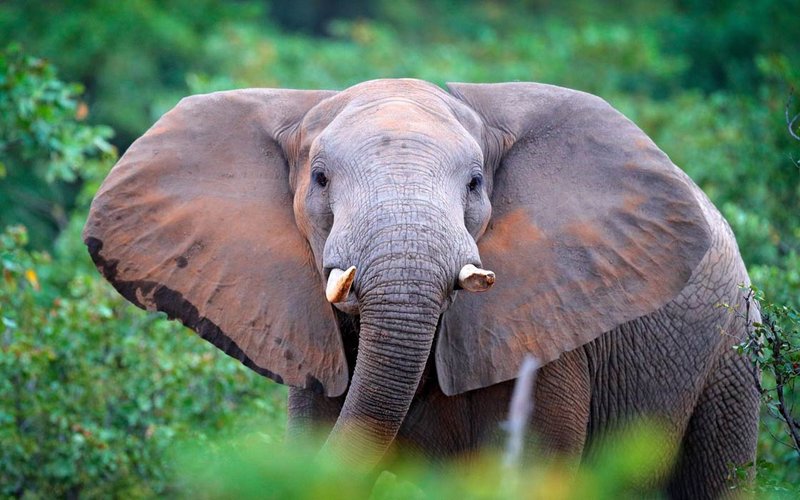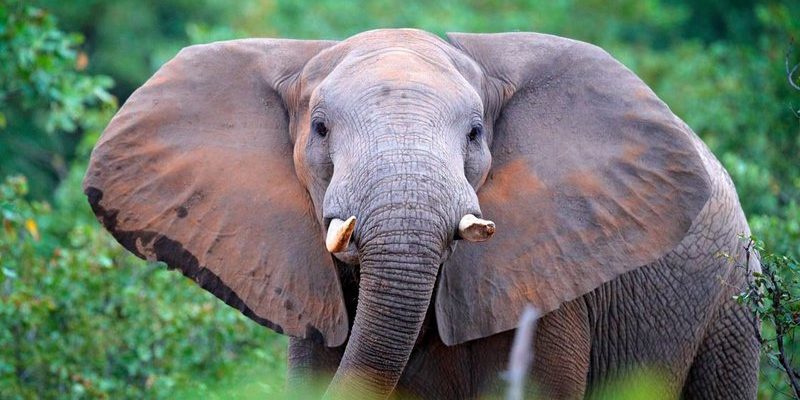
You see, these elephants are not just big animals wandering through the woods. They’re eco-engineers, shaping their habitats and influencing the ecosystem in ways that might surprise you. From dispersing seeds to creating pathways through thick vegetation, the African forest elephant’s activities are like the gears of a clock—each turn is essential for keeping time, or in this case, maintaining ecological harmony.
Why African Forest Elephants Are Unique
African forest elephants are smaller than their savanna relatives, with a more rounded body and straighter tusks. These differences are adaptations to their environment. Their smaller size allows them to navigate dense forests more easily. Interestingly, their tusks are used not just for foraging but also for digging up roots and stripping bark from trees.
Moreover, their social structures are fascinating. Forest elephants often form smaller family groups that are matriarch-led. This close-knit family structure allows for deeper emotional bonds and cooperative care of the young. Each family unit works together, using their strong memories and learning from one another. So, when you think of these elephants, think of a nurturing community working together to thrive in a challenging environment.
The Role of Seed Dispersal
One of the most critical functions of the African forest elephant is seed dispersal. When these elephants munch on fruits, they not only satisfy their hunger but also help plants propagate. As they travel through the forest, they excrete seeds that are ready to sprout.
For instance, certain trees depend almost entirely on elephants to help disperse their seeds. Without these elephants, many plants would struggle to grow in new areas, leading to a decline in plant diversity. Think of elephants as mobile gardeners, spreading life wherever they roam. This process is essential for the regeneration of forests, ensuring that new plants can grow and thrive.
Creating Habitats for Other Species
You might not realize it, but the activities of African forest elephants create habitats for many other species. When they trample through the undergrowth, their actions create clearings that allow sunlight to reach the forest floor. This light encourages the growth of smaller plants and shrubs, which in turn attract various animals.
Plus, the fallen trees that result from elephants stripping bark help create homes for insects, birds, and mammals. It’s a chain reaction; one species contributes to the survival of many others. If you visualize a bustling mini-ecosystem forming around an elephant’s path, you’ll start to see how interconnected life in the forest really is.
Maintaining Forest Structure
Beyond just creating space for other organisms, African forest elephants play a role in maintaining forest structure. Their feeding habits help control the growth of woody vegetation, preventing certain species from dominating the landscape. This balance is critical; when one species thrives unchecked, it can choke out others, leading to a less diverse ecosystem.
In this way, elephants act as ecosystem regulators. By keeping plant growth in check, they promote a variety of species to flourish. This is crucial not just for the forest health but also for the animals that depend on a diverse plant community for food and shelter. So, every time you picture an elephant munching on a tree, think about the stability it’s providing for the entire forest.
Threats to the African Forest Elephant
Despite their importance, African forest elephants face numerous threats. Habitat loss due to logging and agricultural expansion has significantly reduced their natural habitats. Additionally, poaching for ivory poses a severe risk to their populations.
As these elephants diminish, so does their ability to perform their ecological roles. This decline can lead to cascading effects in the ecosystem, making it even more crucial to focus on conservation efforts. Each elephant lost is not just a population number; it’s a direct hit to the health of the forest ecosystem.
Conservation Efforts for African Forest Elephants
Several organizations and initiatives are dedicated to protecting African forest elephants. These efforts focus on creating protected areas, enforcing anti-poaching laws, and promoting sustainable land use practices. Education and awareness are also critical; local communities often play a crucial role in conservation.
By involving local populations in conservation efforts, these initiatives aim to create a sense of ownership and responsibility for the elephants and their habitats. You might think of it as a community rallying around a cherished family member, working together to ensure their safety and well-being.
The African forest elephant isn’t just another animal in the jungle; they’re crucial players in the game of life within their ecosystems. Their roles in seed dispersal, habitat creation, and maintaining forest structure are indispensable.
As we face increasing threats to their existence, it’s vital for us to recognize their importance and support conservation efforts. By doing so, we not only protect these incredible creatures but also safeguard the intricate web of life that depends on them. Remember, protecting the African forest elephant means preserving a significant part of our planet’s biodiversity.

